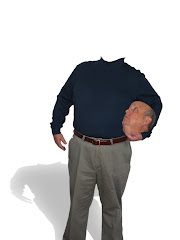 The choir, a simple vocal ensemble of varying sizes (generally more than 10 people), is one of the most popular forms of musical expression for vocalists, particularly because of its availability in a varitey of arenas. The church choir is by far the most common, but many singers also perform in a high-school choir, a collegiate choir or a community choir. And within those varieties of choir exist a number of choir styles. There exists the all-female choir, the all-male choir and the mixed choir, which is comprised of females and males under the vocal categories bass, tenor, alto and soprano. Additionally, a choir can be classified by the number of members; a symphonic choir is typically a large choir while a chamber choir is extremely small.
The choir, a simple vocal ensemble of varying sizes (generally more than 10 people), is one of the most popular forms of musical expression for vocalists, particularly because of its availability in a varitey of arenas. The church choir is by far the most common, but many singers also perform in a high-school choir, a collegiate choir or a community choir. And within those varieties of choir exist a number of choir styles. There exists the all-female choir, the all-male choir and the mixed choir, which is comprised of females and males under the vocal categories bass, tenor, alto and soprano. Additionally, a choir can be classified by the number of members; a symphonic choir is typically a large choir while a chamber choir is extremely small.Though some types of choir, such as the community choir, don't require much out of an audition (if they require an audition at all), there are certain traits a vocalist must possess in order to be able to handle the duties of choir membership. First and foremost, the choir member must be able to sing in tune; it seems common knowledge, but many would-be choir members are impervious to this ability. But singing in tune isn't enough -- choir members must also be able to blend their voice within the presence of other voices, to control vibrato and volume; the point to a choir, after all, is to hear an amalgamation of voices not one in particular. It is also vitally important that a choir member be able to read sheet music. An inability to read music will inevitably lead to the choir member never being able to learn his or her parts. Sight-reading, or the ability to read a piece of music without ever having seen it, is especially preferable for choir members, as a conductor will frequently ask the choir to sing through an entire piece immediately in order to get a sense of the music. Lastly, a choir member must have an independent ear; that is, they must be able to sing their part even while hearing a different part coming from the alto or tenor section. If a choir member has this problem and it's very slight, the conductor will usually place them in a position far from any imposing alternative parts, but a consistent inability to hear one's own voice will ultimately lead to a choir member having a difficult time with the entire performance.









